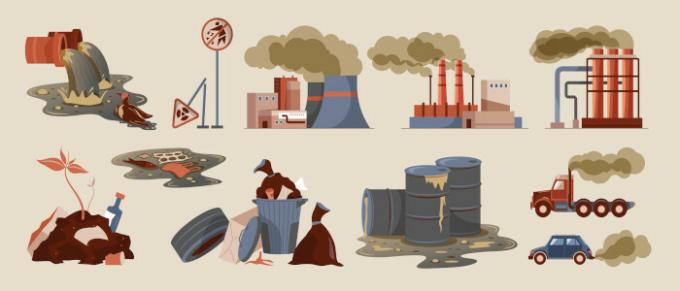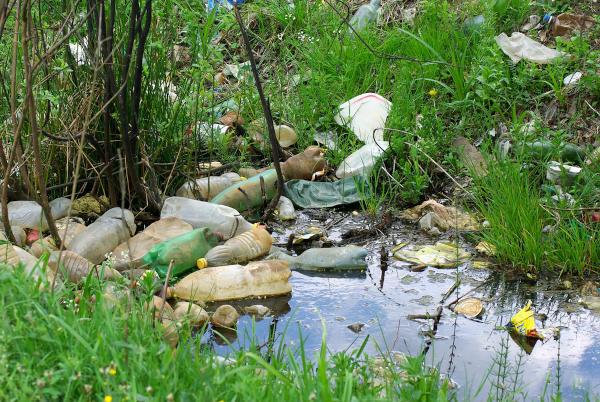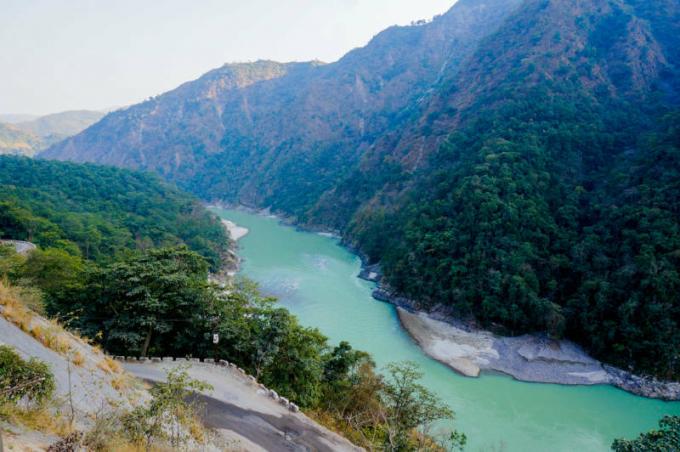A Ambiental degradation It is the loss of quality of elements present in the natural environment, such as water, soil and air. This is a negative impact that is caused by the actions of human beings on nature, such as urban-industrial economic activities, the irregular disposal of garbage and effluents, the removal of native vegetation, the opening of new agropastoral and mining areas and the carrying out of burned. As a result, environmental degradation affects people's quality of life, leads to the loss of biodiversity, intensifies climate change and can lead to a scarcity of natural resources.
Read too: What are the main anthropogenic actions on the environment?
Topics in this article
- 1 - Summary on environmental degradation
- 2 - What is environmental degradation?
- 3 - Main causes of environmental degradation
- 4 - Types of environmental degradation
- 5 - Consequences of environmental degradation
- 6 - Environmental degradation in Brazil
- 7 - Exercises on environmental degradation
Summary on environmental degradation
Environmental degradation is the loss of quality of elements of the natural environment, which are negatively transformed by human action.
The expansion of industrial activity, unplanned urbanization, the opening of new planting areas and pasture, the extraction of resources from nature in an unsustainable way are some causes of degradation environmental.
Among the main types of environmental degradation are pollution (of air, water and soil), leaching, removal of vegetation cover and burning.
The loss of biodiversity, the scarcity of natural resources and the worsening of problems such as the global warming It is climate change are consequences of environmental degradation.
In Brazil, environmental degradation is observed mainly in large urban centers and in biomes such as the Mata Atlantic, the Cerrado and the Amazon, caused by accelerated urbanization and the advancement of agriculture and livestock mining.
What is environmental degradation?
Ambiental degradation is a term that describes the decrease or loss of quality of natural resources and elements present in nature. Environmental degradation occurs when the original aspects of the environment are negatively transformed by external action, notably human action, which causes its deterioration and eventual mischaracterization.
We can say that environmental degradation occurs as a gradual and cumulative process that, when not administered or reversed with appropriate techniques and in a timely manner, leads to the complete destruction or disappearance of such a resource.
Do not stop now... There's more after the advertising ;)
Main causes of environmental degradation
The action of human beings on nature is the main cause of environmental degradation observed in the most diverse ecosystems, and it affects practically all natural resources essential for life on our planet: water, air and soil. The economic activities carried out by society, since at least the beginning of industrialization, and inadequate management of natural elements are responsible for the deterioration of the environment.

Taking into account the more specific causes of environmental degradation, we have advanced urbanization together with the complexification of economic activities and the way of life in the humanity. Because of this, modifications of great magnitude are carried out in the natural environment that end up causing the deterioration of its elements, generating environmental degradation. In this sense, check out some of the main causes of environmental degradation below:
opening new areas for the implementation of urban structure (highways, roads, neighborhoods, energy generation plants, condominiums, etc.);
opening new areas for transformation into pasture or cultivation;
removal of natural vegetation cover;
disorderly and unplanned growth of cities, which leads to a lack of urban infrastructure and results in the irregular disposal of waste on land and waterways;
dumping of sewage and other urban and industrial waste directly into the soil and water sources;
inadequate management of soil and water resources;
large number of vehicles with combustion engines using fossil fuels;
emission of air polluting gases by industries;
intensive exploitation of natural resources (such as ores, wood, oil, fresh water) without taking into account their finiteness;
carrying out fires to clean and open areas.
Types of environmental degradation

Environmental degradation is analyzed according to the element of the natural environment in which it occurs and the way in which the changes unfold. The following types of environmental degradation are:
Air pollution or smog: is the degradation of air quality, which occurs through the emission of polluting gases and particulate matter into the atmosphere, changing the composition of part of this layer.
Water pollution: is the degradation of water quality in springs and oceans, which causes changes in its chemical and physical composition, which can lead to its contamination and impossibility of use by human beings. humans.
Soil pollution: is the degradation of soil quality, which affects its physical structure and chemical composition, which can cause changes in their fertility and harm the different forms of life that directly depend on the substrate.
Soil leaching:process that occurs when soil nutrients are carried away by the action of water that percolates over the surface, caused by deforestation and exposure of the soil to weathering agents. One of its consequences is desertification.
Logging: is the removal of vegetation cover from a given surface, making the soil unprotected and susceptible to phenomena such as erosion and leaching. It also impacts the life of the organisms that lived in that ecosystem.
Fires: Anthropogenic fires caused by humans modify the soil and vegetation, in addition to causing the loss of biodiversity.
Intensification of the greenhouse effect: is a situation that promotes an increase in Earth's temperatures (global warming) and causes the degradation of atmosphere and the different ecosystems on planet Earth, from the coldest, like the poles, to the most hot. As a result, we have accelerated climate change.
Consequences of environmental degradation
Environmental degradation is a process that negatively impacts the natural environment, as it alters the natural characteristics of the elements that are affected. Therefore, environmental degradation harms planet Earth's biodiversity, since ecosystems are modified and, in many cases, habitats become inhospitable due to intense degradation. Therefore, environmental degradation leads toloss of biodiversity.
Furthermore, environmental degradation leads to loss of quality of life for human beings, at the same time that health problems, such as respiratory problems, can be developed. Added to this is the fact that environmental degradation reduces the availability of resources without which human beings cannot survive, such as water and air.
It is also important to highlight that environmental degradation leads to intensification of climate change and the increasingly frequent occurrence of atmospheric phenomena that were, until then, considered rare, such as strong heat waves, very heavy rainfall, historic floods and unprecedented droughts.
Environmental degradation in Brazil

Environmental degradation is a problem that is increasingly present in the Brazilian natural environment, and can be identified both in large urban centers and in the interior of the country. Populous cities such as capitals, such as São Paulo, Rio de Janeiro, Belo Horizonte, Salvador and others, suffer from the deterioration of air quality and water sources, mainly, in addition to the loss of soil quality due to irregular waste disposal, caused by lack of access to regular collection.
Still in relation to the urban environment, In Brazil, we have observed the effects of atmospheric degradation on the climate and the occurrence of extreme events, such as major storms. Cities in the southern region of the country, more precisely in the state of Rio Grande do Sul, experienced abnormal amounts of rain at the end of winter and the beginning of spring of 2023, with intense windstorms and lightning storms, which generated unprecedented river floods, floods, flooding, economic losses and losses human.
The degradation of biomes is also a reality in Brazil. The Atlantic Forest It is one of the complexes that has undergone the most transformations, given that it extends across the most urbanized region of the country. The problem extends to the Amazon It is to the Cerrado, where the expansion of the agricultural frontier and mineral and timber exploration has caused the advancement of deforestation and the multiplication of fires and forest fires.
See too: What are the main environmental problems that exist in Brazil and around the world?
Exercises on environmental degradation
Question 1
(UFRGS)
The months before spring are the ones with the most fires in Brazil. The Amazon and Cerrado biomes have the highest number of monthly fire outbreaks, with 3,490 cases (59%) and 1,673 cases (28.3%), respectively.
Source:. Accessed on: 06 Sep. 2014.
Regarding the biomes mentioned above, consider the following statements.
I. The expansion of the agricultural frontier, combined with the burning of vegetation to produce charcoal, are factors that worsen the degradation of the Cerrado.
II. The Cerrado vegetation is characterized by a predominant cover of grasses and large trees with large leaves.
III. The regions affected by the fires in the Amazon biome are the flooded forests, called Matas de Igapó, which are home to the tallest trees in the forest.
Which are correct?
A) Just I.
B) Only III.
C) Only I and II.
D) Only II and III.
E) I, II and III.
Resolution:
Alternative A.
Economic activities such as agriculture, which expands through areas of Cerrado and the Amazon Forest, and production of charcoal are negative impacts of human action on the Cerrado biome and which cause its degradation. This biome is characterized by small and medium-sized trees, with a twisted and thick trunk, as well as fields of grasses and shrubs. In the Amazon Rainforest, the tallest trees are not in the Igapó Forest, but in the interior of the forest.
Question 2
(Uema) Authorities are trying to prevent the increase in combustion in our society. Read the excerpt about some measures taken in this regard.
As determined by the Brazilian Traffic Code, traffic authorities are responsible for inspecting vehicles, applying applicable penalties to owners of vehicles with pollutant emissions above the levels provided for by legislation. In this way, devices are used to measure pollutant emissions from vehicles, which are coupled to its exhaust, in operation, measure concentrations of the main gases resulting from combustion (CO2).
BRAZIL. Brazilian Traffic Code. Law No. 9,503, of September 23, 1997.
The addition of carbon dioxide (CO2) in the Earth's atmosphere enhances the natural phenomenon called
A) greenhouse effect.
B) eutrophication.
C) thermal inversion.
D) siltation.
E) deforestation.
Resolution:
Alternative A.
The increase in carbon dioxide content in the atmosphere intensifies the greenhouse effect, which leads to air degradation, generating problems such as climate change.
Sources
AZEVEDO, Julia. Understand what environmental degradation is. Ecycle, c2010/2022. Available in: https://www.ecycle.com.br/degradacao-ambiental/.
GREEN THINKING. Learn about the different types of environmental degradation and the importance of land recovery. Green Thinking, 09 May. 2018. Available in: https://www.pensamentoverde.com.br/meio-ambiente/conheca-os-diferentes-tipos-de-degradacao-ambiental-e-importancia-da-recuperacao-de-terras/.
PINTO, Nelson Guilherme Machado et al. Environmental degradation in Brazil: an analysis of empirical evidence. Observatory of the Latin American Economy, n. 188, 2013. Available in: https://ideas.repec.org/a/erv/observ/y2013i18806.html.
Would you like to reference this text in a school or academic work? Look:
GUITARRARA, Paloma. "Ambiental degradation"; Brazil School. Available in: https://brasilescola.uol.com.br/geografia/degradacao-ambiental.htm. Accessed on October 4, 2023.
Click here, understand what environmental degradation is and find out what its causes, types and...
Many people want to know: what is a topic sentence, how to do it, what does it eat, where does it live? Then...
Learn everything about the Fourth Industrial Revolution: when it started, its main...


